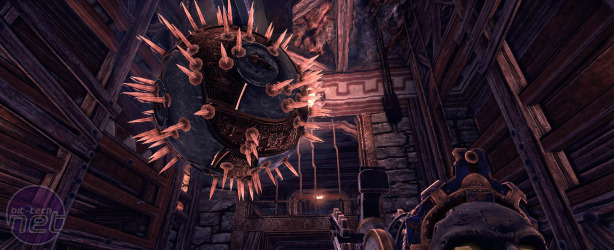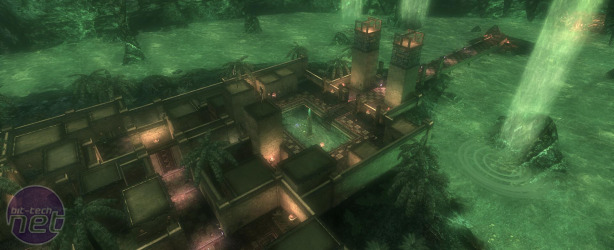
The Ball Review
Platform: PC exclusivePublisher: Tripwire Interactive
UK Price (as reviewed): £14.99 (inc VAT)
US Price (as reviewed): $20.99 (inc tax)
There are a lot of easy jokes to make about a game called The Ball, not least of which is congratulating the developer Teotl Studios for progressing its inventive concept from an Unreal Engine 3 mod to a full-fledged release. Those guys have got some balls on them.
While it’s easy to generate a lot of laughs (well, one) out of the name though, the reality is that the game itself is painfully short on both comedy and character. A few hours in to our ballsy romp and we were desperately hoping for an injection of GlaDOS style humour or horror. An hour after that we would have settled for anyone to talk to whatsoever, because The Ball’s biggest flaw is that it rapidly deteriorates into being a very dry and lonely experience.
In a way that’s admittedly very fitting. The Ball casts players as an archaeologist who, at the very start of the game, falls into a vast underground cavern. Unable to extricate himself quickly and with his overground pals unable to exhume him without new equipment, our intrepid Indy-alike starts exploring the cave in the hope of finding an alternative exit.
What he actually finds though is an immense subterranean city and a giant ball which he can control remotely using a weapon called The Hammer. A relic of an ancient and curiously advanced civilisation, the eponymous ball is the key to all of the cities locks and the generator for all its vehicles. It’s also a powerful weapon, a mode of transport and pretty good at knocking down weakened walls too.
What really stands out about The Ball though isn’t the concept itself though; the practicality of dragging the ball along behind you can occasionally be laborious and it takes a good few levels before any truly interesting puzzles come about. Rather, it’s the level design which really shines through as The Ball’s strongest point. Teotcl has wielded the UE3 engine with such aplomb that it puts Epic's own games to shame, creating impressively intricate vistas, vast temples and abandoned villages which feel genuinely haunting.
More than that, the level design works on a practical level as well as an aesthetic one. While the sheer scale of things occasionally makes it a pain that you have to keep pausing to punt the ball along, a lot of attention has clearly been devoted to the actual geometry. Never once did we accidentally roll the ball into an inaccessible spot or get it stubbornly wedged into a tight corner.
Puzzle design is equally detailed, with Teotcl using in-game runes to create an iconography that players can easily decode at a glance. You’re never confused about whether buttons need to be hit by the ball or the Hammer, for example. The only downside is that many problems are disappointingly simple as a result, with The Ball’s difficulty curve bordering on the lackadaisical. Later levels scale up the complexity rather suitably, but the point where we had to actually stop and think only popped up about halfway through the adventure.
On the rare occasions when you might get stuck, Teotcl has included an in-game guide that can be summoned by pressing ‘H’ and explicitly explains how to proceed. Its a little bit anti-puzzle in how brazenly it gives the game away, but we can’t easily fault its presence. If you don’t like to keep things challenging then just don’t use it.

MSI MPG Velox 100R Chassis Review
October 14 2021 | 15:04











Want to comment? Please log in.